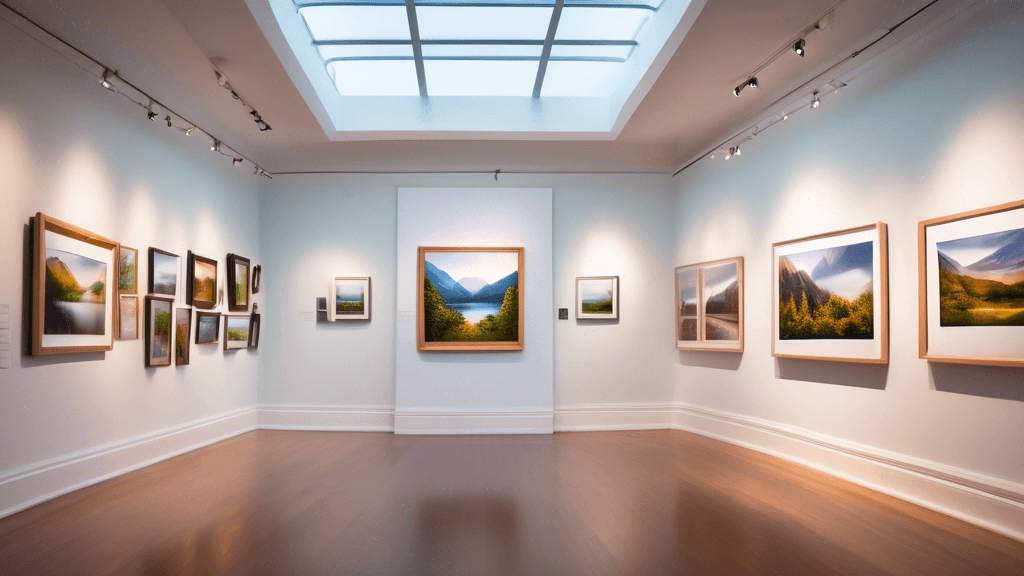
How to Create Your Own Landscape Photography Exhibition: A Detailed Guide
Share
Understanding the Basics of Planning a Landscape Photography Exhibition
Have you ever envisioned showcasing your landscape photography to an audience that appreciates the art of capturing nature's beauty? Organizing a photography exhibition can be a rewarding yet daunting task. Whether you're a seasoned photographer or someone looking to break into the scene, this detailed guide will help you navigate the complexities of setting up your own landscape photography exhibition.
Step 1: Define Your Vision and Goals
Why are you organizing this exhibition? Start by defining the purpose and the unique perspective you wish to share through your landscapes. Consider what you want your audience to feel and think when they view your work. Are you exploring environmental themes, or are you telling a story about a specific place? Knowing this will guide your planning process.
Step 2: Curate Your Collection
Selection is key in setting up a successful exhibition. Not every photograph you've taken will be suitable. Choose pieces that correspond not only to your theme but also demonstrate a variety of compositions and subjects to maintain viewer interest. Aim for a coherent collection that speaks to the heart of your vision.
Step 3: Find the Right Venue
The choice of location can greatly influence how your work is perceived. Look for spaces that align with the tone and style of your photographs. Outdoor venues or galleries with natural light can complement landscapes, enhancing the viewer's experience. When selecting your venue, consider factors like foot traffic, space layout, and rental costs.
Step 4: Print and Frame Your Work
The quality of your prints and frames can substantially affect the impact of your photography. Opt for professional printing services to ensure color accuracy and clarity. Discuss printing materials and techniques with experts to find what best suits your aesthetic, whether it’s glossy or matte finishes. Frames should enhance but not overshadow your work, so choose styles that align with your photography’s nature.
Step 5: Market Your Exhibition
Effective marketing can attract more visitors and enhance the success of your exhibition. Use a blend of traditional and digital marketing strategies. Create engaging flyers, posters, and social media posts that reflect your exhibition's theme. Reach out to local art critics and bloggers to preview your show. Networking with other photographers and joining local art groups can also broaden your exhibition's reach.
Step 6: Host an Opening Reception
An opening reception can serve as a pivotal moment for your exhibition. It's an opportunity to engage directly with your audience, discuss your work, and receive feedback. Provide light refreshments and prepare a short talk or a slide presentation about your journey in landscape photography and the stories behind your featured works.
Step 7: Engage with Your Audience
Throughout the exhibition, be available to discuss your work with visitors. Engaging with your audience can provide invaluable insights into how your work is perceived and can help build a loyal following. Consider hosting guided tours or photography workshops during the exhibition to deepen visitors’ appreciation of your art.
Step 8: Review and Reflect
After the exhibition concludes, take the time to review its successes and shortcomings. Gather feedback from guests and professional critics to gauge the impact of your exhibition. Reflect on what you have learned and consider how you can apply these insights to future projects.
Grace Adams, a prominent landscape photographer, once said, Every exhibition is a learning curve. It’s not just about displaying your work, but about growing as an artist and connecting with people on a deeper level.
Remember, the goal of a landscape photography exhibition is not only to display your technical skills but also to share the passion and message behind your artwork. It's about making a statement, moving people, and perhaps, changing perspectives.
Conclusion
Organizing a landscape photography exhibition is undoubtedly challenging, but it's also one of the most gratifying experiences a photographer can have. It allows you to connect with an audience, receive direct feedback on your work, and potentially pave the way for future opportunities. More importantly, it gives you a platform to advocate for the landscapes you photograph, potentially influencing public perceptions on environmental conservation.
Are you ready to take your landscape photography to the next level and share it with the world? Begin planning your exhibition today, and see where this journey can take you. Your next step could be the first towards making a lasting impact through your art.





